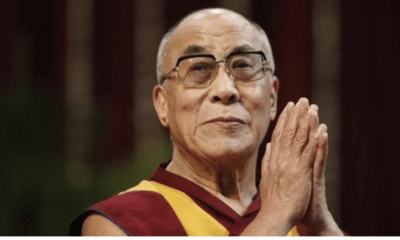
|
Getting your Trinity Audio player ready...
|
(Text of the article originally published by Hindustan Times on January 10, 2022. Views expressed are personal.)
The recommendations of the Justice Ranjana Desai-led commission about the delimitation of the Jammu and Kashmir (J&K) Union Territory (UT) have left leaders in Kashmir fuming. The commission has, after prolonged deliberations, recommended 47 seats for Kashmir and 43 seats for Jammu in the 90-member legislature to be formed in the newly constituted UT. The Kashmiri leadership is angry that of the seven additional seats, six were given to Jammu and only one to Kashmir. But some leaders in Jammu complain that the commission has founded its recommendations on the Census data of 2011, which according to them, was a greatly manipulated one.
In the past, delimitation in J&K used to be undertaken in a haphazard and ad hoc manner. In Jammu, the average electorate per constituency used to be 99,000, whereas Kashmir used to have a seat for every 87,000 voters. The delimitation commission didn’t take population alone as the criterion this time. Other parameters such as geographical compactness, nature of the terrain, communication facilities and related factors were also taken into account. Most importantly, the commission has developed the elector–population ratio (EPR) to ensure equitable distribution of seats.
In democracies, numbers matter. None understood this better than the Kashmiri leadership in the early years of Independence. Exploiting the advantage provided by Article 370, the leaders went about distorting numbers in a blatantly partisan manner against fellow citizens in Jammu and Ladakh. For example, as per the 1941 Census, Jammu should have been given an equal number of seats as Kashmir.
But the J&K Constituent Assembly in 1951 allocated only 30 seats for Jammu while Kashmir got 43 seats. In the next delimitation in 1994, this discrimination was perpetuated by allocating only 37 seats to Jammu against 46 to Kashmir. As per the projected population of 1991 (Census was not held in that state due to terrorism), the population of the Jammu region stood at 45% of the overall population of the state, entitling it to 40 of the 87 seats.
During 2006-2008, a delimitation exercise was undertaken in the country through an act passed in Parliament in 2001. It was to be based on the 2001 Census. It would have been an opportunity to correct the deliberate discrepancy in seat allocation among the regions in J&K. However, sensing trouble, chief minister (CM) Farooq Abdullah got a resolution passed in the assembly that no delimitation would be done until 2026.
The 2011 Census, undertaken in the state under the leadership of CM Omar Abdullah, came under severe criticism from the leadership of Jammu as it showed an unusually high rise of population in Kashmir. In absolute terms, the population in Kashmir between 2001 and 2011 went up by 1.41 million. This was a 25.8% rise while Jammu registered a rise of 21% during the same period. More suspicious was the increase in voter numbers; 7.12 lakh new voters were added in Kashmir during the same period, a whopping rise of 24.7%, whereas the corresponding rise in Jammu was a mere 7%.
It is these distortions that the delimitation commission has grappled with while trying to justly redraw electoral units for the new UT legislature. EPR was the effective way out that it found in overcoming the Census irregularities. EPR at the UT level was 1.9. The commission has applied it to each district and readjusted the seats district-wise. In that process, Badgam in Kashmir got one additional seat, taking the number of seats in Kashmir to 47. Similarly, EPR has given six additional seats to the Jammu region — two in the Jammu district, and one each in Poonch, Rajouri, Kathua and Udhampur districts — that took total seats in the region to 43.
Victimhood politics is integral to some politicians in J&K. They are crying hoarse over what they see as an injustice. Some of them even questioned the constitutionality of the commission. Interestingly, they never talked about the unconstitutionality of not allowing delimitation along with the rest of the country in 2006. There is an effort to project this as a Hindu versus Muslim issue too although the fact is that several districts in Jammu such as Doda, Kishtwar, Poonch, and Rajouri have substantial Muslim populations. In the previous assembly, there were at least 10 seats in the Jammu region, which were won by Muslim candidates.
Delimitation is a complex exercise in J&K. The region has large migrant populations — Gujjars and Bakrwals — who constantly stride between the two regions. Over 100,000 migrant Kashmiri Pandits live in Jammu while the number of migrant Muslims from Kashmir to Jammu would be at least five times higher. Additionally, Jammu has over 50,000 displaced people from Pakistan-occupied Kashmir living in different districts. Taking all these factors into account, in addition to the large size of the constituencies in the Jammu region, the delimitation commission has accorded it 43 seats. In spite of substantial out-migration, Kashmir has got the lion’s share of 47 seats. Ideally, at least a couple of seats should have been reserved for Kashmiri Pandits in Kashmir and also the Scheduled Tribe (ST) reservations extended to the substantial pahadi (hill) population in that region.
Hopefully these anomalies, along with the major constraint of the credibility of the 2011 Census, will be corrected when the next delimitation takes place in 2026 for the country.




Very well explained sir. They the particulars do murder and play victimhood …Jai Ho
Harsh facts presented Sir… we are glad the troubled crown of India will gets its due constitutional representation.
Thank you for a very revealing article The statistics scream out loud and clear, the wrongs that were being perpetuated by a select band of NC and PDP politicians under the cover of 370 Corrections are laudatory Better late than never